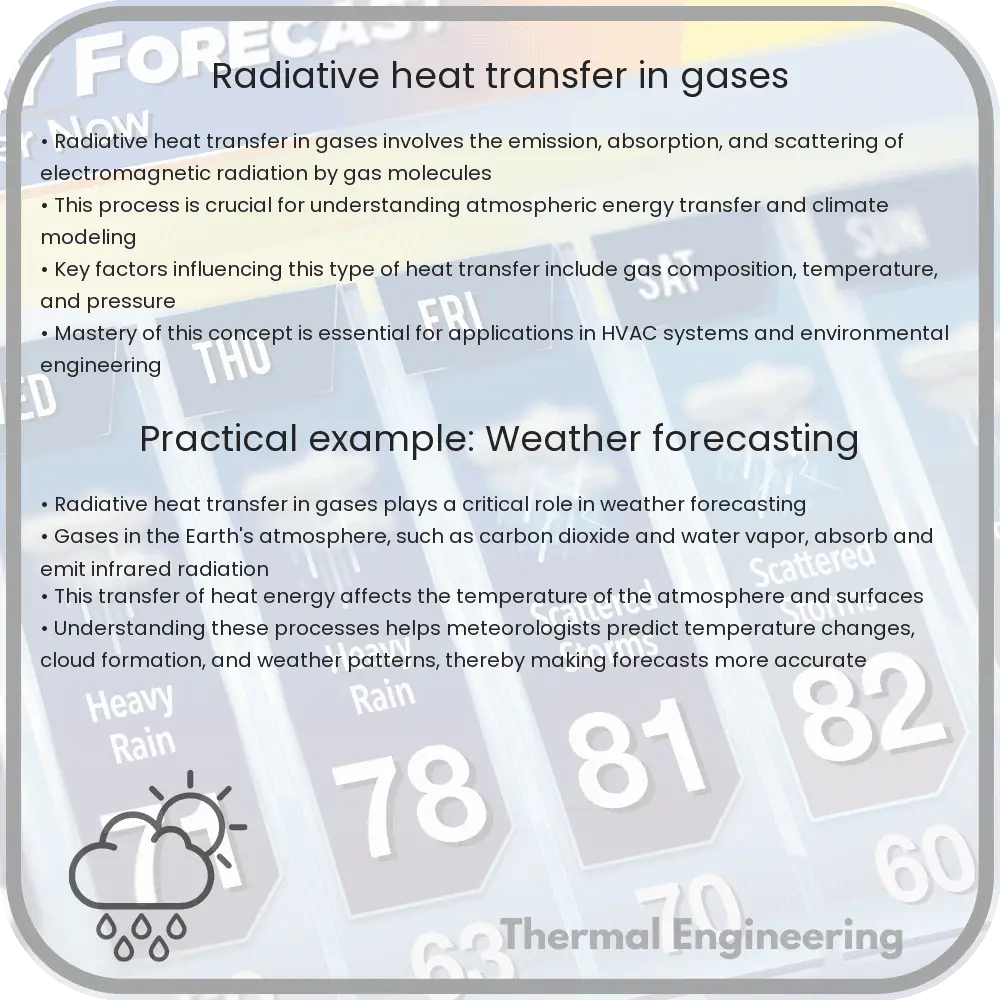Explore the principles and applications of radiative heat transfer in gases, emphasizing its role in engineering and atmospheric sciences.

Understanding Radiative Heat Transfer in Gases
Radiative heat transfer is a mode of energy transfer that involves the emission and absorption of electromagnetic waves. In the context of gases, this process plays a critical role in various engineering applications, including combustion systems, atmospheric science, and industrial processes. This article aims to explain the fundamentals of radiative heat transfer in gases and its implications in practical applications.
Basics of Radiative Heat Transfer
Radiative heat transfer differs from conduction and convection as it does not require any medium for energy transfer and can occur in a vacuum. It is governed by the Stefan-Boltzmann law, which states that the energy emitted by a body per unit area is proportional to the fourth power of its absolute temperature. The mathematical representation of this law is:
E = σT4
where E is the emissive power, T is the absolute temperature in Kelvin, and σ (Stefan-Boltzmann constant) is approximately 5.67 × 10-8 W/m2K4.
Radiative Properties of Gases
Gases have unique radiative properties that depend on their molecular composition and structure. Unlike solids, gases do not emit or absorb radiation uniformly across all wavelengths. Their interaction with radiation is mostly through discrete spectral lines or bands specific to each gas. Key factors influencing these interactions include:
- Temperature of the gas
- Gas composition and concentration
- Path length through which the radiation travels
Role of Absorption and Emission Coefficients
The extent to which a gas absorbs or emits radiation is quantified by its absorption and emission coefficients. These coefficients vary with wavelength and are crucial for calculating the heat transfer in a gaseous medium. The general expression for the spectral radiative heat transfer rate per unit area can be described by the equation:
qλ = Iλe – Iλ
where qλ is the net heat flux at wavelength λ, Iλe is the emission intensity, and Iλ is the intensity of the incident radiation.
Applications of Radiative Heat Transfer in Gases
Radiative heat transfer in gases is significant in numerous engineering fields. Some of the notable applications include:
- Atmospheric Science: Understanding of greenhouse gases and their impact on climate change.
- Combustion Systems: Design of efficient combustion chambers in engines and turbines.
- Industrial Furnaces: Optimization of heat distribution and temperature control.
- Spacecrafts: Thermal management systems that ensure the spacecraft components operate within safe temperature limits.
Challenges in Modeling Radiative Heat Transfer
Accurately modeling radiative heat transfer in gases poses several challenges due to the complexity of spectral line-based absorption and emission. Advanced computational methods and spectral databases are often required to achieve precise predictions. The major hurdles include:
- High computational cost of line-by-line radiative transfer calculations
- Need for accurate spectroscopic data of gases
- Integration of radiative heat transfer calculations with other modes of heat transfer
In conclusion, radiative heat transfer in gases is a complex but crucial phenomenon in many engineering applications. Understanding and accurately modeling this process is essential for the design and improvement of systems where thermal radiation plays a significant role.